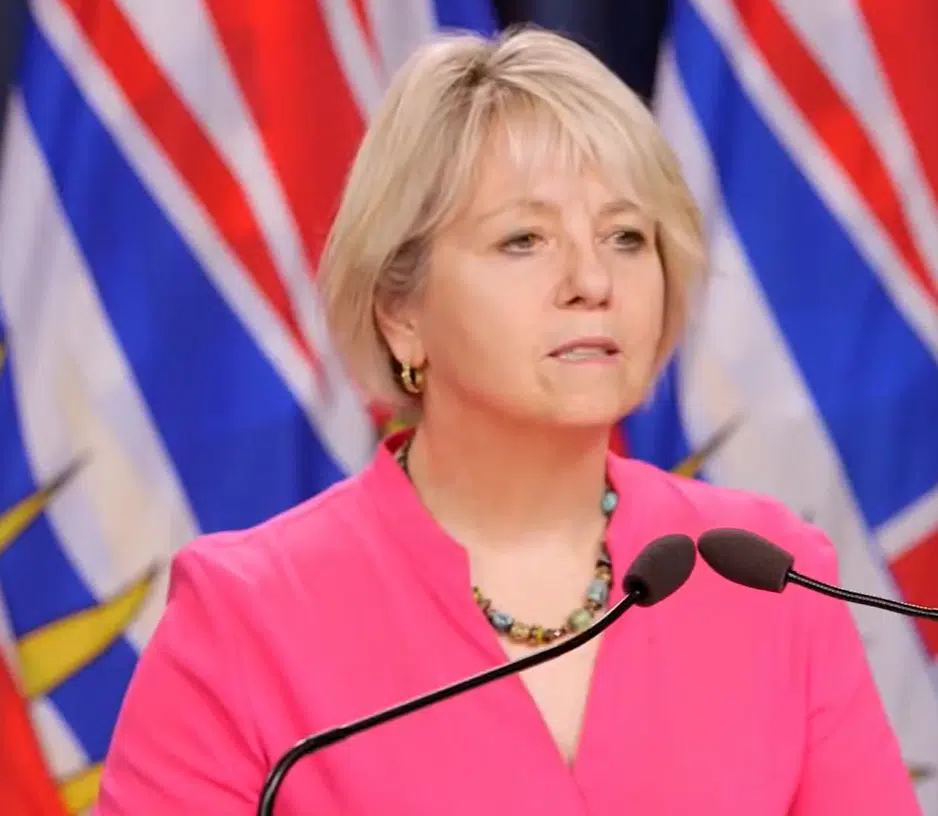
With today being marked as the “Day of Observance” on the one-year anniversary of the COVID-19 pandemic, new cases reported in B.C. are a reminder that we are still in the thick of it.
Health officials have reported 569 new cases today, as well as three new deaths from the virus.
The new cases include only 26 new cases today in Interior Health, as well as 301 in Fraser Health, 140 in Vancouver Coastal Health, 60 in Northern Health, 41 in Island Health and one case in a person who lives outside of Canada.
Provincial Health Officer Dr. Bonnie Henry says cases peaked in early December, and while we’ve been on a downward trajectory since then, cases began to increase in the middle of last month.
“Our seven day rolling average has increased but if we look at the statistics what we see is that our hospitalizations has levelled out and come down and really importantly, the number of people who are dying from COVID-19 has also decreased dramatically,” she said.
That said, after four months of restrictions on social gatherings, health orders were amended to allow outdoor social gatherings in groups of up to 10 people.
As of today, there are 4,912 active cases across B.C., with 244 people in hospital and 68 people in critical care. Another 8,900 people are under public health monitoring.
Meanwhile, in Kamloops, two COVID-19 outbreaks at healthcare facilities have been declared over today, at Highridge Home and Singh House and at Westsyde Care Residences. Henry says there are now nine active outbreaks remaining at healthcare facilities in B.C., compared to almost 50 two months ago.
All told, there have been 86,219 total cases of COVID-19 in B.C. along with 1,397 deaths. Worldwide, more than 118 million people have tested positive for the virus, and more than 2.6 million people have died from it.
Henry says there were 14,000 more deaths than expected in Canada in 2020, and she says many of those are attributed to COVID-19. She also says the United States saw a 15 per cent rise in deaths last year – the most in any year since 1918 when the influenza pandemic began.
She says COVID-19 was the eighth-highest cause of death in B.C. last year, and was the 11th-highest for total years of life lost.
“That may not seem like much… but it shows the impact this virus has had on our province,” she added.
Overdoses were the fifth-highest cause of death, with Henry saying it continues to be a challenge to fight both health emergencies simultaneously in this province.
As of today, Henry says we continue to see concerning case numbers primarily in the Lower Mainland. But she says all corners of the province – including Prince Rupert right now, for example – continue to be affected by the virus.
New modelling data shows the number of contacts people are having are at about 50 to 60 per cent of normal. It also projects a 50 per cent contact rate could lead to a peak in mid-March followed by a gradual decline into the spring months. However, a 60 per cent contact rate could result in cases surging back up.
“This is not a prediction,” Henry said. “But it helps us understand the things that we need to do.”
The province’s reproductive number — the number of people a person will infect — is hovering around one. A number close to or above one risks an increase in cases.
Of concern continues to be COVID-19 cases that are variants of concern. There were another 11 such cases today, taking the provincial total to 568, 89 of which are active. A majority – 588 – are cases of the B.1.1.7 (U.K.) variant. There have been 36 cases of the B.1.351 (South Africa) variant and 14 cases of the P.1 (Brazil) variant.
Unlike Ontario, where about 40 per cent of cases are variants, Henry says these cases make up a small percentage of the caseload in this province.
There have now been 366,791 doses of a COVID-19 vaccine administered in the province, 87,009 of which have been second doses. As of noon today, people 85 and older, as well as Indigenous people 65 and older are able to book COVID-19 vaccine appointments.
And as it stands, 79,829 people who tested positive for COVID-19 are considered to have recovered, about 92 per cent of the total.















